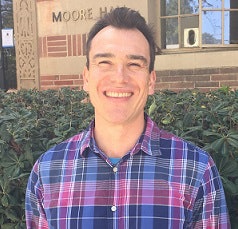University of California at Los Angeles and University of Arizona researchers released data this week that examined how colleges and universities often steer clear of poor communities and communities of color in off-campus recruiting.
While most colleges and universities present themselves as institutions open to a diverse range of students, regardless of race or socioeconomic status, research gathered by EMRA Research (Enrollment, Management, Recruiting & Access) shows a decided trend in off-campus recruiting.
Utilizing digital data collection techniques that “webscrape” public websites, EMRA discovered that off-campus recruitment, such as visits to high schools and college fairs by representatives of colleges and universities, prioritized wealthier communities and White communities and often overlooked poor communities and communities of color.
 Dr. Ozan Jaquette
Dr. Ozan Jaquette“We felt the debate to access in higher education focused mostly on students and often students’ deficiencies. That’s because we have so much data on students, but we really don’t collect much data about universities’ priorities,” said Dr. Ozan Jaquette, one of the study’s principal investigators.
“We wanted to start reframing this debate about college access to make it shift away from this blame on student deficiencies to consider are universities’ priorities contributing to this?” added Jaquette, an assistant professor of education at UCLA.
To do this, the research team spent 2017 compiling and analyzing data. Python, a general-purpose programming language, collected recruiting data by web-scraping the admissions websites of colleges and universities. Data was collected from 49 public research-extensive universities, 49 private universities and 42 private liberal arts colleges. They investigated the entire websites of the institutions, searching for URLs containing data on off-campus recruiting events such as college fairs, group travel visits and individual visits to high schools by representatives of an institution.
This initial report spotlights 42 colleges and universities. Graphs and maps are included in the report, covering schools ranging from Oberlin College, Smith College and Baylor University to Emory University, the University of Alabama and the University of Kansas.
“Our research is going to focus on the university behaviors,” said Jaquette.
Jaquette and fellow principal investigator Karina Salazar, a doctoral student at the University of Arizona, are scholars of organizational behavior. Their goal is to promote transparency about institutional priorities, which will hopefully lead to conversations about access.
“We want to understand how universities are either helping increase access for low-income and students of color or perpetuating inequalities that are often blamed on students and families,” said Salazar.
 Karina Salazar
Karina SalazarColleges and universities are more likely to visit affluent schools, according to study findings. Trends showed the majority of sampled public universities focus recruiting efforts on wealthy, out-of-state high schools. Overall, the high schools visited tended to have a higher concentration of White students than those not visited. Both public and private universities disproportionately visited private high schools over public high schools.
“There is a lot of qualitative research that needs to happen as to why they are choosing these places,” said Jaquette. “In some cases, there are probably good reasons.”
Jaquette said he and his team have received push-back since the data was released, some of which he felt were legitimate critiques. These included certain institutions noting that they would have visited certain high schools if the schools organized college fairs.
“Our hope is that we get other people interested in studying marketing recruiting,” said Jaquette.
Next for EMRA is to start to analyze additional data and pursue more avenues to explore.
“We want to know, when colleges and universities purchase lists of prospects from the College Board and ACT — their bank of test-takers — what are the characteristics of students that they’re prioritizing as prospects?” Jaquette said, adding that hey plan to figure out “ways to get concrete data on universities’ enrollment priorities and behaviors using these data science techniques to do so.”
There are plans to engage directly with some of the institutions included in the research.
EMRA will turn over data to the colleges and universities and give the schools the opportunity to fill in missing information. The goal is to get a complete picture of each institution’s off-campus recruiting. Jaquette also hopes to engage with various offices of diversity, equity and inclusion.
“A couple of [DEI] offices have seen data for their university and started conversations with their administration or admissions office,” said Jaquette. “We’ve found by giving access and showing this data to other stakeholders at a particular university that cares about issues of access, they become advocates. That’s something we didn’t anticipate, and we’re going to try to increase. We want to be purposeful about engaging these offices.”
Jaquette praised the University of Nebraska, which visited virtually every public school in the state of Nebraska. None of the other public universities in the study matched that.
“I think this is just the beginning of our research,” said Salazar, noting that they have received interesting feedback from high school students who have not been actively recruited. “We’re hoping this widens the conversation about college access.”















